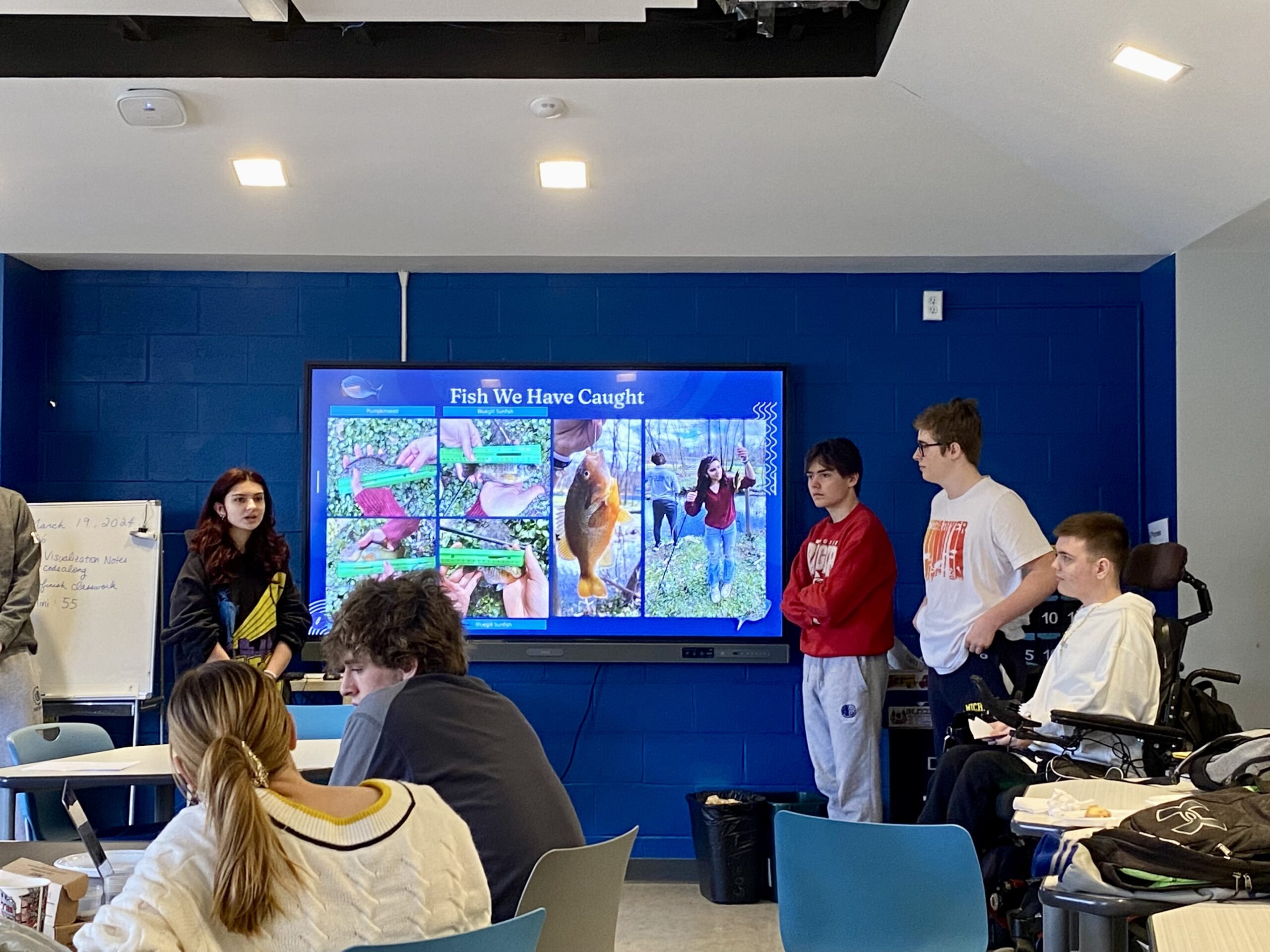Bronxville High School students – who have been exploring different topics in Stephen Kovari’s Bronx River Research class over the last several weeks – presented their project proposals before an audience of classmates, teachers, administrators and local experts on March 19.
“The goal is to ensure accountability of project validity and planning, and to help students refine and think through their ideas,” Kovari said. “Similarly to how researchers nearly always have to submit a proposal before receiving grant funding on a project, our students presented a proposal before being allowed to proceed with their project.”
After completing lab modules on stream flow, water chemistry, trees, macroinvertebrates, and soils, the students had the background knowledge on a wide variety of topics, and an understanding of what a good research question looks like. As a result, they developed and refined their research questions before moving on to methodology. The students’ projects focus on major themes such as fish, wildlife, vegetation, soils and water chemistry.
During his presentation, Dev Tarwala discussed how his project would focus on nitrogen’s effects on the Bronx River. During their presentation, Charlie Donohue, Erik Gjonpalaj, Charlotte Golimbu, Liam Neild, Jari Seibold and Toby Wardell discussed their projects, which aim to study the diversity, distribution, and health of the Bronx River’s fish population by collecting data on fish and comparing it to water chemistry metrics, stream flow and other physical characteristics of the river. For their projects on water chemistry, Sam Mandanas and Era Gjocaj will study fluctuations in nitrate levels in the Bronx River by site and weather conditions using LaMotte Nitrate test kits. They also aim to assess linkages between nitrate levels and other water chemistry metrics, such as pH.
Davis Patterson and Natalie Thiessen-Rodriguez’s projects focus on the composition, nutrients and health of the Bronx River riparian area soils, their impact on vegetation, and their association with issues like erosion or invasive species. Gabbi Bicci, Mina Farhoush and Roan Merluccio’s projects will focus on how wildlife use highly fragmented, urbanized landscapes by using camera traps to study spatial and temporal activity of mammals. Another focus of the project is on bird biodiversity during the spring migration season. Sophia Richard, Taylor Sundquist and Elyse Sims’ projects will focus on invasive species, such as Japanese knotweed or honeysuckle, and their distribution and association with characteristics of the physical environment. Another focus is on tree coring and providing a past record of growth and environmental conditions at the Bronx River for a wide range of species and locations.
Bronx River research began as a Foundation grant spearheaded by two high school students and a teacher back in 2015, and it has grown into a schoolwide program of study.


